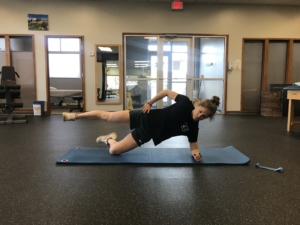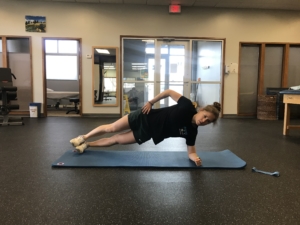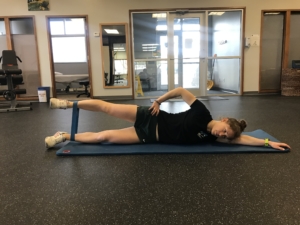Training errors, along with certain running biomechanics, place us at risk for developing a running related injury. Excessive pelvic drop and hip adduction can contribute to an increased risk of developing gluteal tendinopathy or a gluteus medius/minimus muscle strain, especially when we also have exceeded our tissue’s load capacity through an abrupt increase in running mileage or intensity.
Gluteal tendinopathy is often the cause of lateral hip pain (pain on the outside of the hip) in runners. This type of injury often happens due to increased compressive loads placed on the gluteal tendons at the greater trochanter located on the outside of the hip. The compressive loads are often caused by excessive pelvic drop or hip adduction when running.
Pain is often felt running, especially uphill, and also when lying on the affected side, climbing stairs, and with single leg activities.
It is important to avoid stretching with this type of injury, such as IT band stretching. Stretching the lateral hip structures actually further increases compressive loading of the tendons and mimics the type of movement that is often the cause/mechanism of injury. Instead, the best way to treat this type of injury is to strengthen the hip abductor muscles (gluteus medius and minimus), starting initially with isometric exercises. Isometric exercises are exercises that cause a muscle to work/contract without moving the joint. Types of these exercises for the gluteus medius and minimus muscles might look something like this:
To learn more about lateral hip pain and for specifics on exercises to try, check out Sapphire Physical Therapy’s blog post on Addressing Lateral Hip Pain In Runners. Whatever your injury may be, Sapphire PT is ready to help!









